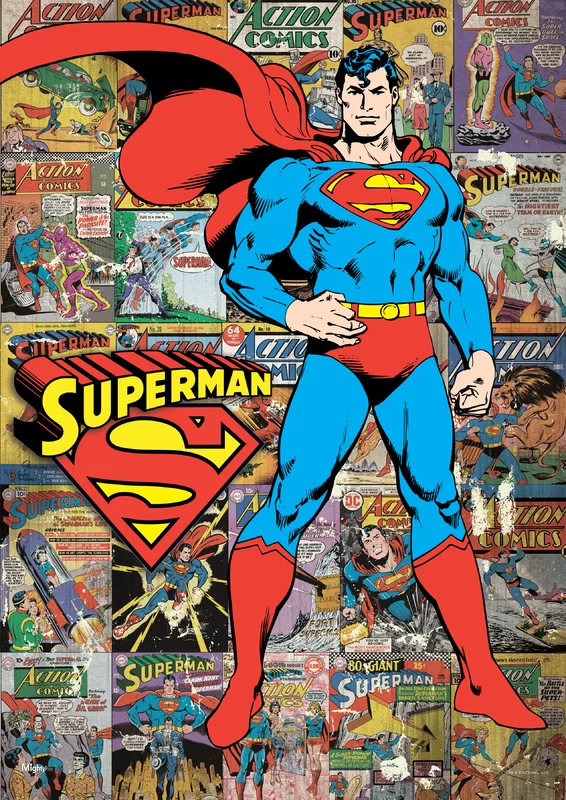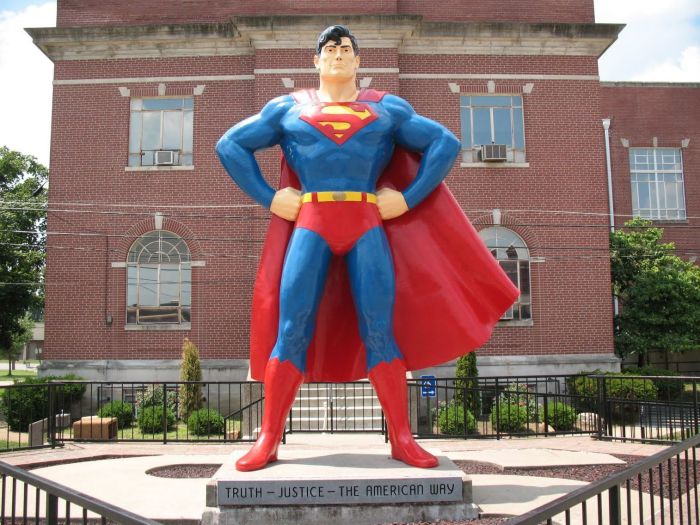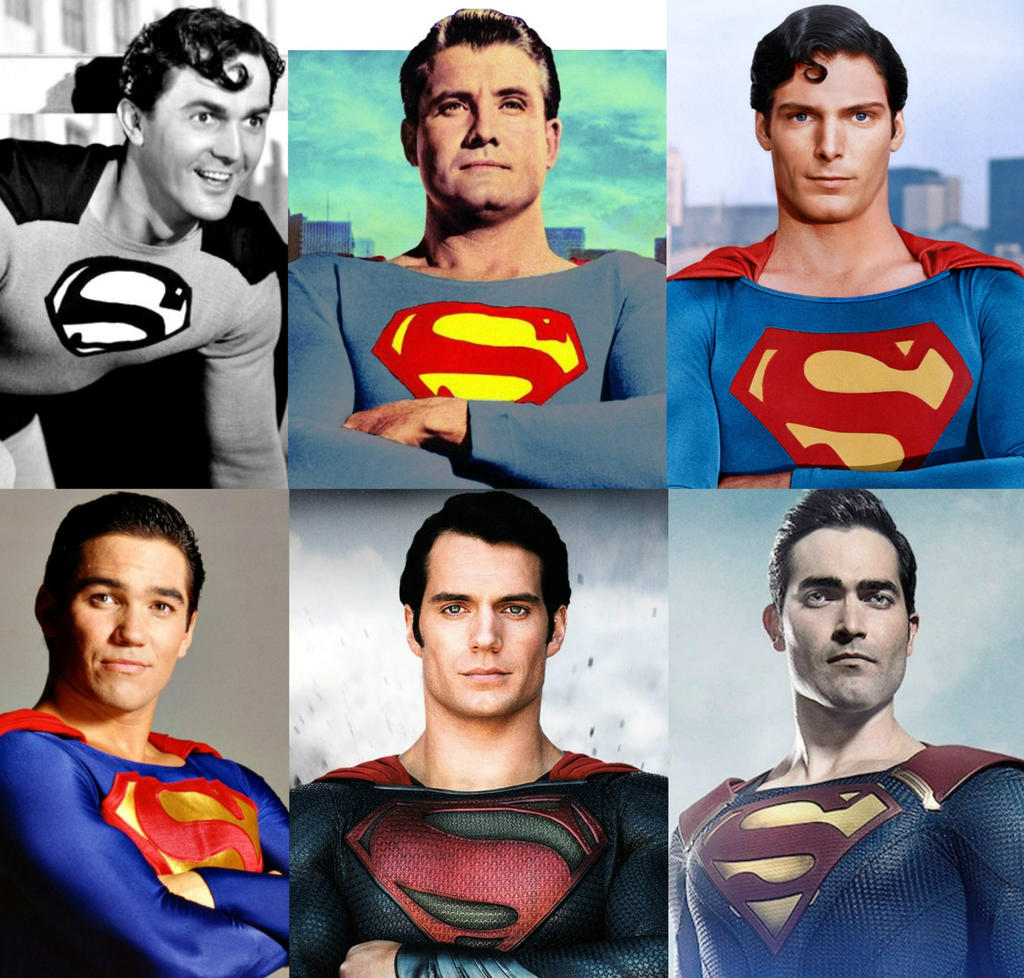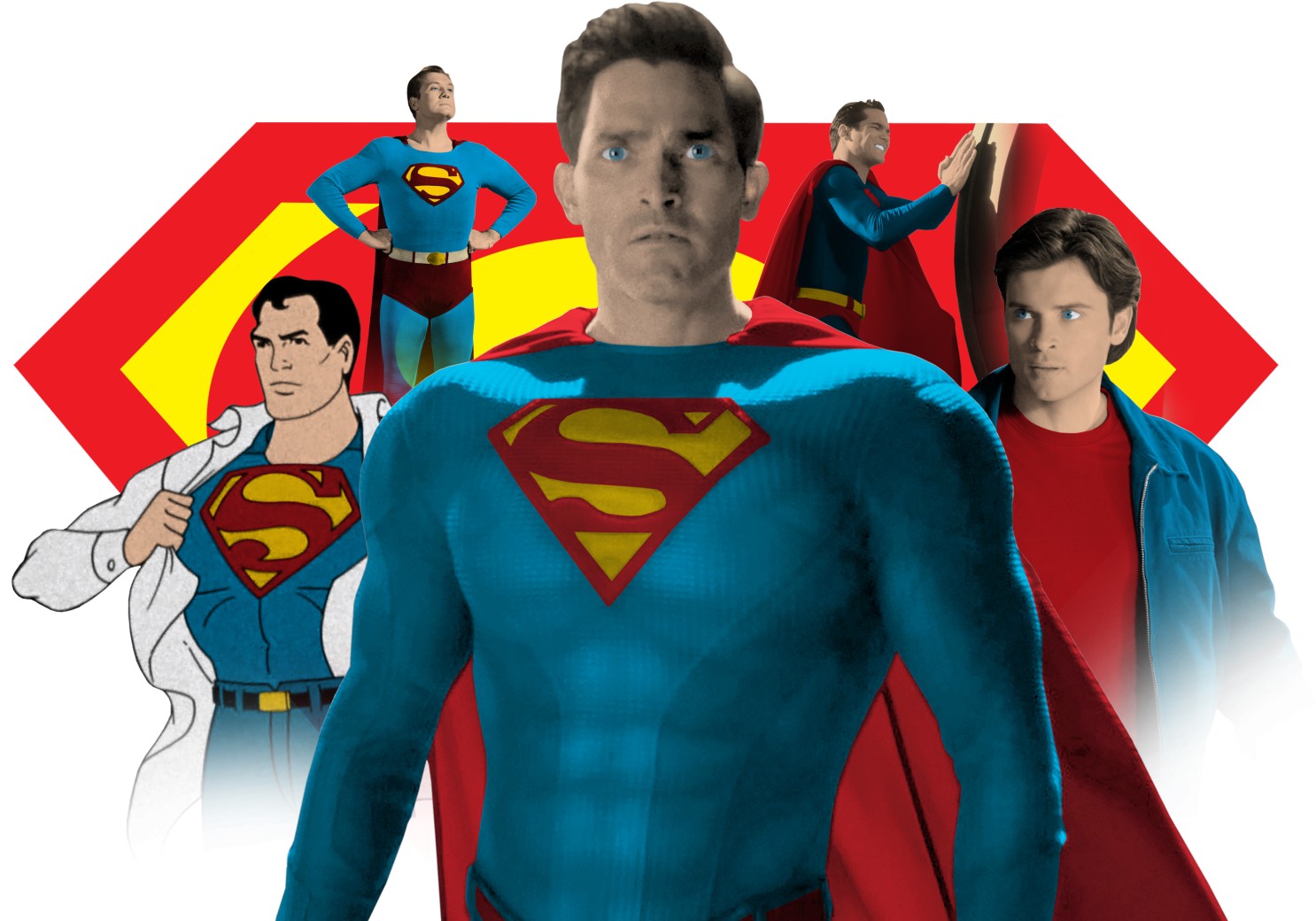
|
|
Superman: The Movie

The scientist Jor-el tries to convince the ruling council of the planet Krypton that their world is about to crash into the sun, but his entreaties fall on deaf ears. And so he builds a capsule, launching his baby son Kal-el in it just as the planet is destroyed. The capsule lands on Earth where the baby is found and adopted by Jonathan and Martha Kent, who name him Clark. On Earth Kal-el's greater mass gives him incredible powers, including super-strength, near invulnerability and the ability to fly. Growing into manhood Kal-el, or Superman as he calls himself, decides to use his powers for good as guided by educational recordings left by his father. In the guise of the klutzy, bespectacled Clark he gets a job with The Daily Planet newspaper in Metropolis. There he becomes attracted to fellow reporter Lois Lane, but she has eyes only for Superman. However ruthless real-estate developer Lex Luthor sees Superman as a threat to his plan to drop nuclear warheads on the San Andreas fault-line thus dumping California into the ocean and making his Nevada real-estate the most valuable beach-front property in the world, and undertakes to get rid of him.
The Salkind-Donner Superman could be measured as the demarcation point where cinematic superheroes starting to be taken seriously on screen. Greater budget allowed Superman and successors to fly with a full flight of fantastic imagination and the results are a simply marvelous incarnation of a comic-book. This, Tim Burton's two Batman films, Batman (1989) and Batman Returns (1992), The Crow (1994) and X-Men (2000), would have to count as the handful of really great comic-book to film adaptations.
It wasn't always the case with Superman though. Original treatments of the script most definitely fell into the Batman tv mode. One infamous scene in Puzo's script had Luthor encountering Telly Savalas as Kojak in a railway station who then offers Luthor a lollypop and says "Who loves ya, baby ?" Reportedly it was Donner who toned the camp elements down, although some of it does still remain with the playing of Luthor and assistants. The major mistake certainly was playing Lex Luthor as a buffoon. Luthor survives okay, thanks to the usually excellent Gene Hackman in the role, but the film surrounds him with a bimbo and an annoyingly buffoonish performance from Ned Beatty as his dim-witted assistant. Otherwise the film though is remarkably successful.
The film takes some liberties with the comic legend, but often for the better. The idea of the 'S' that Superman wears on his chest now quite ingeniously becomes a family crest, which makes it less egotistical than in the comic-book. The film also abandons the Grecian-styled look of Krypton from the comic-book and instead crafts Krypton as a beautifully ethereal white-on-white world of crystal, lorded over by a regal, mellifluous Brando. The film has a quite stunning sense of otherworldly spaciousness in these scenes. The film also changes Luthor's characterization from the comic-book, turning him from a brilliant criminal scientist into a plutocrat. (Interestingly this is a characterization that was later copied by DC Comics in their post-1986 New Universe and all subsequent portrayals of Luthor on tv - see below). This Luthor also has hair rather than being bald, although Hackman does whip his wig off in the very last scene. [Incidentally Luthor's scheme of blowing the San Andreas fault-line up with a nuclear weapon in order to dump California into the ocean was later reused by the Bond film A View to a Kill (1985)].
The script does have some illogicities - like a planetful of people who somehow don't manage to notice that they are about to crash into their own sun. And there isn't any sufficient explanation of Superman's powers. Mindedly the comic-book didn't exactly offer a believable explanation either - but this script drops the usual yellow/red sun explanation and offers some nonsense about Superman having denser mass (something that would in actuality make him too heavy to fly). And the climactic scene where Superman reverses time by turning the world backwards, while it contains an epic feat of superheroism, is something that in practicality would cause everything not nailed down to go flying off in the opposite direction.
Part of the problem the film has is too many cooks involved in the broth. There are times that it feels like several different films run together. The film's style seems to change from one sequence to the next - the Kryptonian scenes in the first 45 minutes have a beautifully spacious mysteriousness; by contrast the Smallville scenes evoke the pastoral lyricism of a Norman Rockwell American heartland; and finally the film becomes rather camp in the Luthor scenes. The miracle is that despite all the problems, Donner wields it all together into a magnificent and satisfying whole. It achieves its minor excesses of sentiment - Lois Lane's voice-overs during the night-flight across Metropolis with Superman are dreadfully mushy, and Phyllis Thaxter as Martha Kent's comment "We've prayed to the Lord to send us a child" upon finding the baby Kal-el in a spaceship plays a little too straight-facedly on the film's conscious sense of its own cod-Christian mythology. But none of the other Superman films achieve such an epic scope, nor such an aching lost childhood sense of purebred red, while and blue American innocence. When we see Reeve in his Superman costume for the first time and he takes off into the air flying straight into and over the camera, the result is exhilarating.
The Salkinds spent a long time trying to cast the lead. Everybody was considered from Arnold Schwarzenegger and Sylvester Stallone to Warren Beatty, Robert Redford and Olympic gold-medal pentathlete Bruce Jenner. Thankfully some of these choices were passed over - one cringes to think what the project would have been with Schwarzenegger or Stallone in the role. The actor finally chosen was Christopher Reeve. 27 year-old Reeve was a total unknown at the time - he'd only appeared on the soap opera Love of Life (1951-80) and had a minor part in the disaster movie Grey Lady Down (1977) - and was suddenly propelled from nowhere into superstardom. Reeve makes a warm, wonderfully human Superman. He plays the part like a totally square boy scout, full of unbelievable good cheer. He's the ultimate in sensitive romantic males - which is where the film's conviction comes from.
The special effects are excellent - as the publicity machine promised "You will believe a man can fly." Yugoslav front projection specialist Zoran Perisic invented a new special effects system - the Zoptic Process - that allowed matte work of a flying Reeve to be placed in relation to background processes that could be focused in and out on. Sometimes the effects looks a little hokey - there's a big wire visible just before the dam blows - but mostly the work is stunning. John Williams, who'd just done similar duties for the previous year's two big sf hits, Star Wars (1977) and Close Encounters of the Third Kind (1977), turns in a stirringly epic score.
In some ways the film was an echo of the times. One of the most prevalent genres of the 1970s was the disaster film where humanity was constantly being reminded of its fallibility as colossal size man-made structures were being rendered as rubble, perhaps a reminder of the social turmoil of the preceding decade. Where disaster movies were giant spectacles in which humanity was constantly humbled by natural disaster and accident, Superman is cast as a heroic paragon of good that can stand up to disaster. The epic-size climax has him turning nuclear missiles in their path, acting as a bridge for a collapsed rail line, welding tectonic plates back together and even reversing the world and turning back time for the sake of love - a feat no other superhero film has managed to copy in scale. Both Superman and Star Wars marked a move away from the defeatism of the disaster spectacle and a return to black-and-white morality. They were in a sense a reclaiming of America. As the warden of the jail (where Superman delivers Luthor seemingly without even the benefit of a trial at the end of the film ) says, "With you here, this country is safe again." It was a change mirrored in the real world - Ronald Reagan sailed into the White House in 1980, just like Superman does here, consciously crafting himself as an upholder of old-fashioned decency and moral values.
The film was followed by three sequels - Superman II (1980), Superman III (1983) and Superman IV: The Quest for Peace (1987). The Salkinds also made Supergirl (1984) from the comic-strip featuring Superman's cousin and the tv series Superboy (1988-91). II is fine, but quality of the series plummeted drastically with III and Supergirl. The Salkinds then sold off interest to Cannon who produced the cheap IV, which has some moments of interest.
Later versions of the Superman legend are Lois and Clark: The New Adventures of Superman (1993-7), a popular tv series that focused more on the love triangle relationship between Clark/Superman (played by a pouty boyish Dean Cain) and Lois Lane (played by a radiant Teri Hatcher, who for a time became the most downloaded star on the net). But the series seemed more Moonlighting than Superman and when it tried to become more superheroic in later seasons merely became silly. There was the excellent Superman animated series (1996-8) (although the series actually has no title, instead being represented by Superman's 'S' crest) where the superheroic exploits were rendered in a beautifully stylized Art Deco milieu. Of any media adaptation this series is actually the most faithful of all to the comic-book, granting many supporting characters and villains from the comic-book the chance to appear. Superman also appears as one of lineup of DC superheroes in the same creative team's Justice League (2001- ). Superman was also incarnated in Smallville (2001-2011), which concerns Superman's teen years.
Richard Donner went on to make a number of other genre films - including the fine Mediaeval romantic fantasy Ladyhawke (1985), the updated Dickens tale Scrooged (1988), the interestingly dark children's film Radio Flyer (1992), the dud comedy Conspiracy Theory (1997) and the dull Michael Crichton-adapted time travel film Timeline (2003). In the 1990s Donner turned out endless sequels to his Mel Gibson hit Lethal Weapon (1987) and flops like Assassins (1995). He also acts as producer on The Lost Boys (1987), the Tales from the Crypt cable anthology series (1989-96), Delirious (1991) about a writer trapped inside his own soap opera, and two further comic-book adaptations with X-Men (2000) and Constantine (2005). Donner has also been attached to a number of interesting sounding projects in recent years including a live-action adaptation of the cartoon Speed Racer (1967-8) and a remake of The Quatermass Xperiment (1955).
The Salkinds fairly much vanished as a producing force after the Superman films. They went on to conduct two other ventures into legend with Santa Claus - The Movie (1985) and Christopher Columbus: The Discovery (1992), both of which were widely regarded as total disasters.




